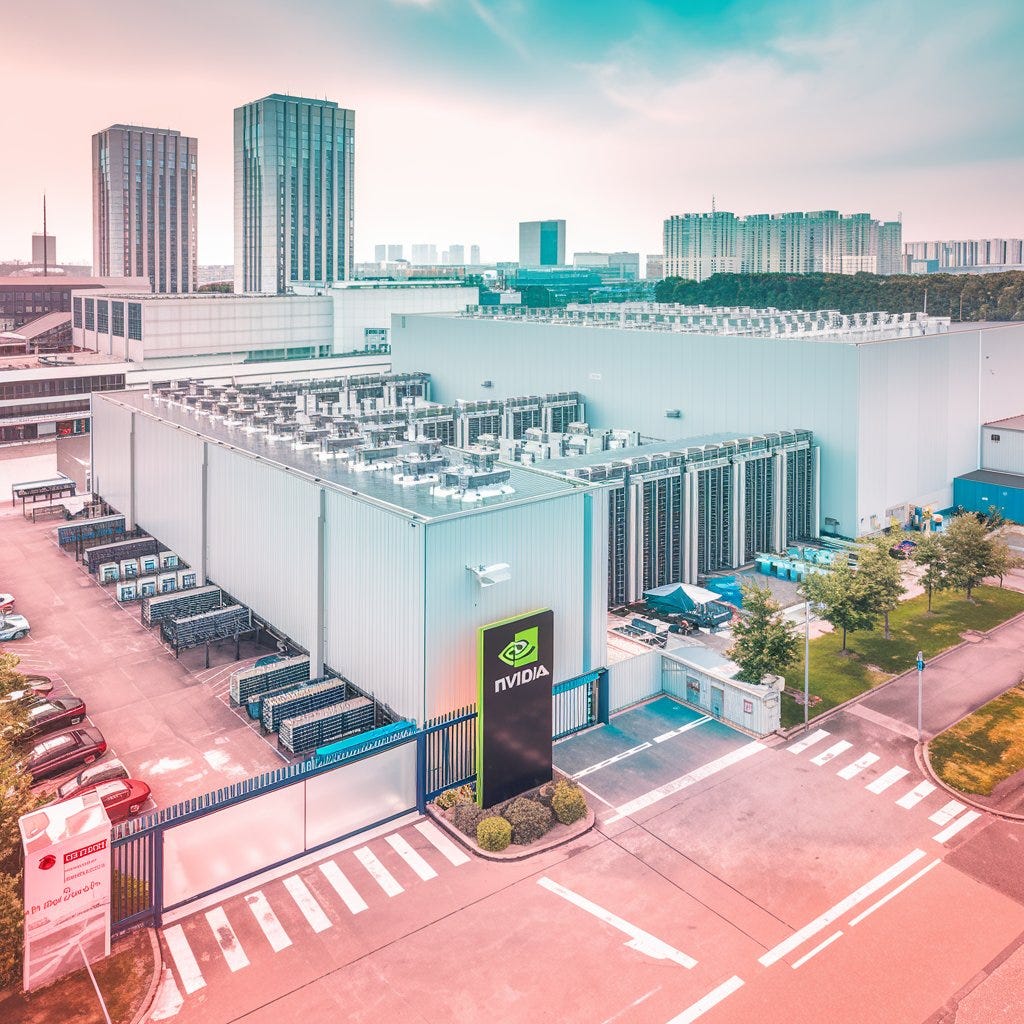Nvidia’s AI Factory Playbook: Why 100 Facilities Signal the Start of Industrialized Intelligence
Jensen Huang says AI demand is "explosive." The numbers and the factories back it up. 100 AI factories are now underway. This isn’t hype. It’s industrial transformation.
Welcome to Global Data Center Hub. Join 1300+ investors, operators, and innovators reading to stay ahead of the latest trends in the data center sector in developed and emerging markets globally.
Executive Summary
Nvidia reported $130.5 billion in revenue and $72.88 billion in net income in FY2025, driven almost entirely by AI infrastructure demand.
100 AI factories are being deployed globally, backed by U.S. manufacturing ($500B investment), European AI clouds, and APAC supercomputers.
Blackwell chips are powering a surge in AI inference, with Microsoft and Google reporting 5–50x token growth in one year.
These facilities aren’t just data centers. They are industrial AI production plants, converting energy into intelligence tokens.
This shift marks the emergence of AI factories as sovereign-scale infrastructure, demanding new approaches to power, policy, and global supply chains.
Nvidia’s rise from GPU manufacturer to geopolitical infrastructure player signals a power realignment in the AI economy.
What Happened
Over the last 12 months, Nvidia has moved from market leader to market maker.
Its Q1 FY2026 revenue hit $44.1B, up 69% year-over-year, while data center revenues now account for nearly 90% of the company’s topline. At the heart of this growth is one concept: the AI factory.
Jensen Huang describes these next-generation data centers as industrial plants that consume energy and silicon and output tokens. Billions, even trillions, per month. This framing has transformed how the industry thinks about infrastructure.
Backed by global demand, Nvidia is leading a 100-site global expansion:
In the U.S., Nvidia is investing $500B to localize chip production and supercomputer assembly, tapping partners like TSMC, Foxconn, and Wistron.
In Europe, it is launching AI manufacturing clouds with 10,000-GPU sites and new partnerships with firms like Mistral AI.
In Asia-Pacific, it is co-building Taiwan’s first AI supercomputer alongside national governments and telecom giants.
These aren’t pilot projects. They are scaled facilities with national-level backing, designed to make countries and companies competitive in the age of large-scale intelligence.
Why It Matters
The AI hype cycle is over. What remains is the industrial reality. If you can’t build and run AI factories at scale, you can’t compete.
1. AI Factories Are the New Industrial Plant
Data centers were once cost centers. Today, they are AI production facilities. Nvidia’s framing of tokens as outputs, measurable, monetizable, and exponentially growing, redefines the value proposition of infrastructure. Inference isn’t a backend function anymore. It’s product.
2. Energy Is Now a Core Input
Each AI factory is a power-hungry asset, demanding constant, reliable, and increasingly carbon-free electricity. With racks pulling 30 to 100 kW and liquid cooling as standard, energy is now as fundamental as chips in the AI stack. Nvidia’s partner deployments often follow sovereign or utility-scale energy deals, not just land or fiber.
3. Blackwell’s First-Mover Advantage
Nvidia’s Blackwell platform is in short supply and full production. It anchors a new generation of AI supercomputers. With major cloud providers and governments placing bulk orders, early access has become a strategic asset. The company’s first-quarter Blackwell sales already topped billions. Scarcity is now a moat.
4. Sovereign AI Infrastructure Strategy
From France to Taiwan, countries are underwriting AI factory deployment with national science councils, chip alliances, and energy partnerships. Nvidia’s ability to localize production while scaling global reach puts it at the center of a new industrial diplomacy model. One where AI capacity is a proxy for national competitiveness.
5. AI Infrastructure Has Financialized
Wall Street has taken notice. Nvidia’s $3.4T market cap reflects not just chip sales, but its role as a sovereign-aligned, vertically integrated AI infrastructure provider. With companies like Microsoft, Alphabet, and Amazon spending $14 to $25B per quarter on AI infrastructure, Nvidia’s future growth is baked into capital allocation strategies around the world.
What This Means
For Investors
The market is rewarding those who treat AI infrastructure like industrial real estate with durable economics, scarce supply, and global demand. Nvidia’s upstream control of the AI stack, chips, reference architecture, factory partnerships, creates multi-decade exposure. Expect capital to flow into firms enabling energy, packaging, and AI-native cooling solutions.
For Operators
Designing for AI means building for scale, power, and heat. If your facilities still assume 5 to 15kW racks, you’re building for yesterday. Nvidia’s AI factories are showing what next-generation campuses look like: 100MW-plus blocks, liquid-cooled aisles, sovereign co-location, and chip-to-cloud integration.
For Policymakers
AI factories are strategic infrastructure. Nvidia’s footprint reveals where governments are serious. Those who offer manufacturing incentives, power guarantees, and digital sovereignty get the factories. Those who delay lose them. The geopolitical prize is not just chip fabrication. It is who runs the intelligence layer of global infrastructure.
The Bottom Line
Nvidia has redrawn the map of global AI infrastructure.
This isn’t just about chips. It’s about power, partners, and policy.
In the race to deploy AI at scale, the winners won’t be those who talk about the future.
They’ll be the ones who build it, one AI factory at a time.
If your infrastructure strategy isn’t keeping pace, it’s already outdated.

